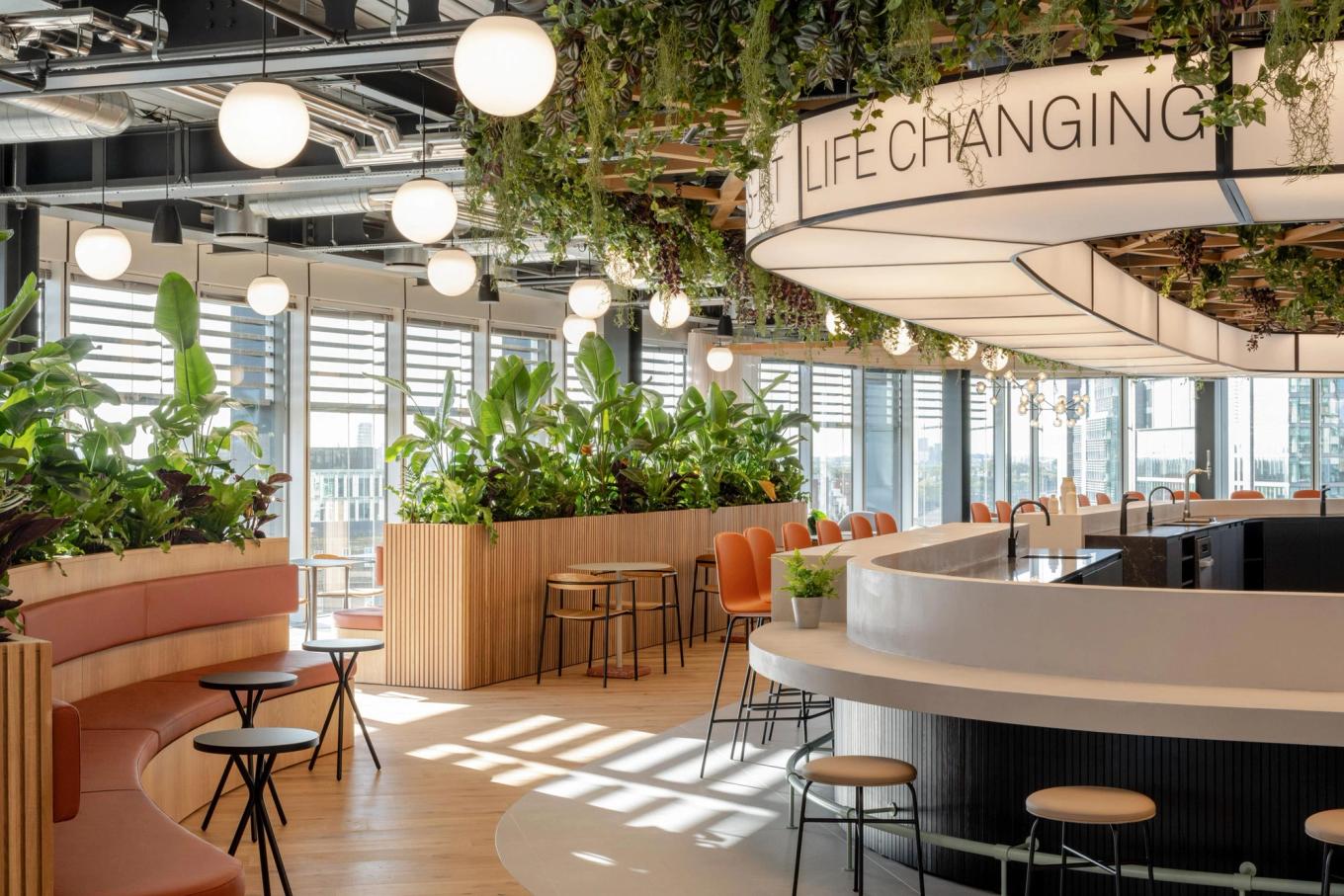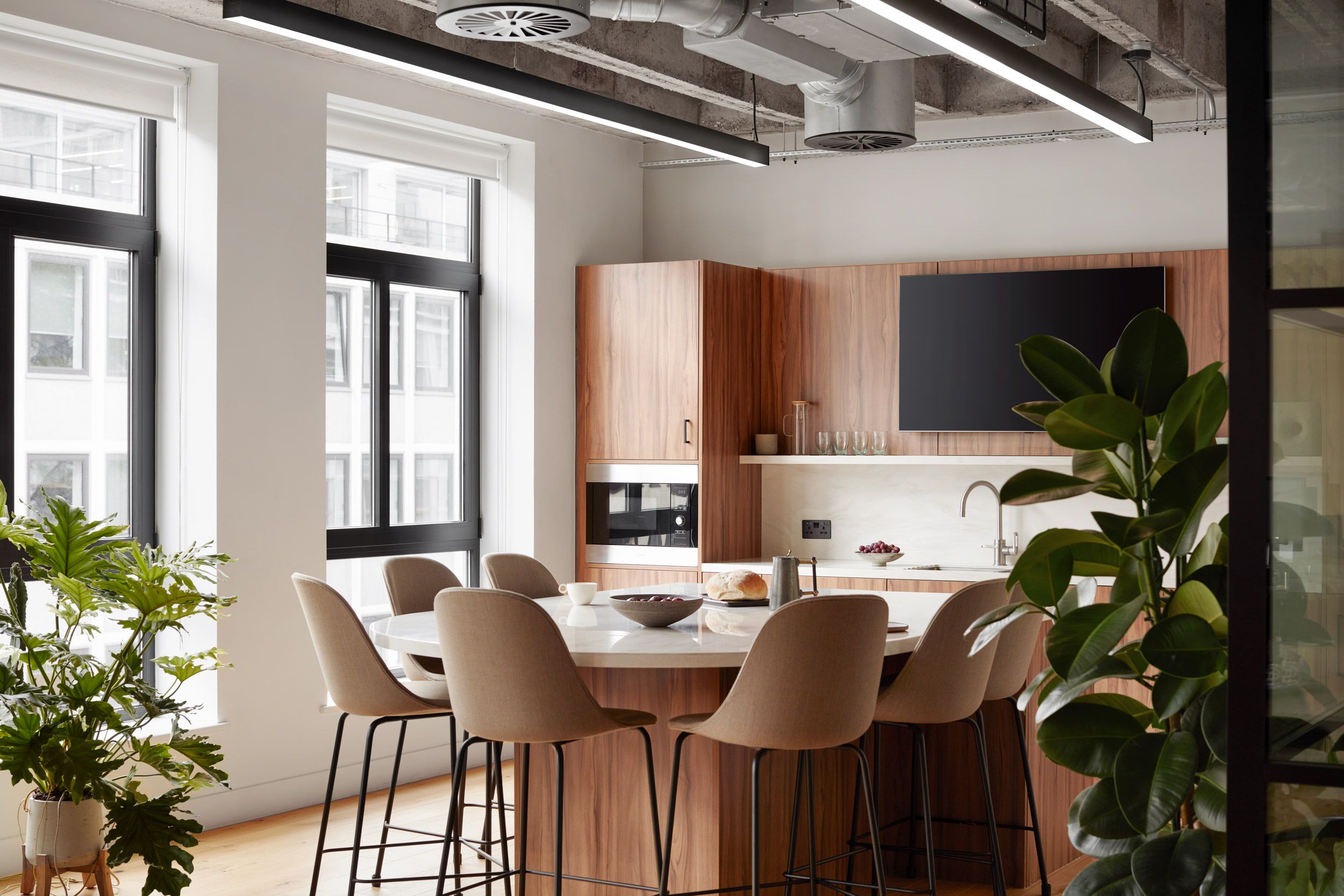
How Office Design Impacts Your Employees' Workplace Wellness
22 Aug 2024
Wellness
Prioritising employee wellbeing in the workplace isn’t a luxury – it's a necessity. A staggering 84% of professionals link their job satisfaction directly to the design of their working environment, according to one survey.

At Ikon, we understand the impact that a thoughtfully designed workplace can have on workplace wellbeing. Our approach goes beyond aesthetics, focusing on creating environments that support physical, mental and emotional health. In this article, we explore how strategic office design can transform your workplace into a hub of satisfaction, wellbeing and productivity.
Designing a Productive Work Environment
Here are some of the design choices that can significantly impact employee wellbeing.
Ergonomic Design
Ergonomic design focuses on creating work environments that are not only comfortable but also optimise efficiency and prevent physical strain. This approach includes elements like custom furniture, ergonomic chairs, adjustable desks and other accessories that support natural body posture and movements during work hours. By reducing physical discomfort, ergonomic setups can significantly enhance employee satisfaction and overall wellbeing.
According to the study referenced at the beginning of this article, 84% of employees believe that ergonomic design positively impacts their job satisfaction. This correlation between physical comfort and job satisfaction naturally influences employee productivity and their likelihood to remain with the company long-term.
Find out how Ikon transformed one Cat-A space into a flexible, modern workplace.
Creating a productive work environment is about crafting spaces that promote comfort, efficiency and overall happiness.
Biophilic Design
Biophilic design integrates natural elements such as plants, wood and natural textures into the built environment. It's rooted in the idea that connecting with nature can reduce stress and enhance mental health. One study by Human Spaces showed that access to greenery and natural elements can improve employee well-being and creativity by up to 15%, with a 6% increase in productivity.
By incorporating biophilic elements into office spaces, we create environments that foster creativity, reduce stress levels and promote a sense of wellbeing among their employees. This design philosophy aligns with the growing understanding of the importance of sustainable and health-conscious workplace practices.
Learn how Ikon integrated biophilic design throughout Alpha Group’s Paddington office.

A Microsoft study found that 84% of people are motivated to come into the office by the promise of connecting with their coworkers. A well-designed office should balance communal and private spaces to address these needs.
Balancing Collaboration and Privacy
The shift to remote work during the pandemic highlighted the importance of both collaboration and privacy in the workplace. While remote work offers flexibility, according to a survey by CivicScience it can also lead to feelings of isolation and decreased collaboration.
Collaborative spaces can include open areas and meeting rooms encourage teamwork and social interaction. Private spaces, in contrast, include quiet zones and private offices and allow for focused work and confidential meetings.
Different industries have unique requirements for privacy and collaboration. For instance, law firms need private spaces for sensitive client meetings, while creative industries benefit from open, collaborative environments. At Ikon, we understand these nuances and tailor our designs to meet the specific needs of each sector.
See how Ikon created a multi-use space for PDT Partners on Cannon Street.
Designing a workplace that supports employee wellbeing requires expertise and careful planning. At Ikon, we specialise in creating work environments that promote health, wellbeing, and productivity. Our workplace consultancy services can help you transform your office into a space where employees thrive.


